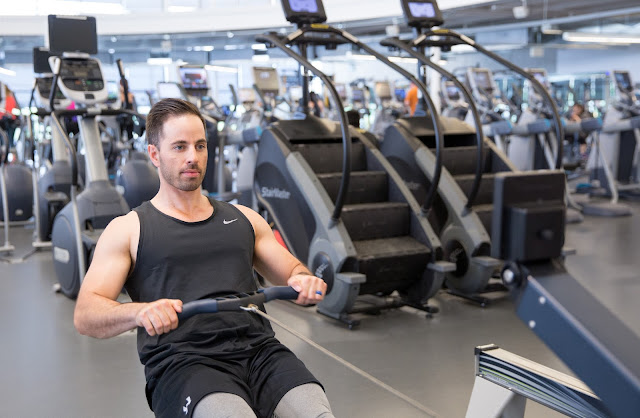Good Exercise Selection
by Daniel Jangula, CSEP-CEP
Assistant Fitness Testing & Assessment Coordinator
Assistant Fitness Testing & Assessment Coordinator
Recreation Services, University of Manitoba
Regarding
exercise selection, it’s far too easy to stick with exercises that may give you
a good pump over working on a movement correcting an imbalance or helping fix
poor posture. The temptation of spending your precious gym time working on
developing your biceps, pecs or abs is pretty strong, and seeing your bulging
muscles may seem to deliver a bigger hit of gratification over gaining a
greater degree of thoracic spine extension or better control of the
lumbo-pelvic region. I see this phenomenon particularly (although definitely
not exclusively) with younger gym goers. With a lot of university students, it’s
easy to get away with only working on chest and arms every time they’re in the
gym, and maybe occasionally trying to squat or deadlift more weight than their
form can tolerate once every other week. Poor exercise selection that feeds
into posture faults is more easily tolerated time has yet to catch up with them,
and they haven’t spent a decade or more working a full-time desk job where
large amounts of time may be spent in compromised posture.
For many people
I’ve talked with that have been unfortunate to have an injury related to
general overuse, a sporting activity, or just being so unfortunate that age has
taken their toll on their body, they’ve had a sense of appreciation engrained
in them for the benefit of a well-balanced exercise program that includes
exercise selection geared toward injury prevention, posture correction, and
improvement of mobility. I’m not trying to be a wet blanket by saying don’t
ever do a bicep curl again if you want to optimize your movement, just that
devoting some time by throwing an exercise or two in each workout that’s geared
toward mobility or stability of certain problematic body parts as opposed to
JUST focusing on aesthetics can go a long way in helping you feel like you’re
not falling apart (you can have the best of both worlds, don’t worry).
In a world
designed around copious amounts of sedentary time, whether it’s at a desk for
the job you’re working or time spent in lectures and studying, or time spent
zoned out in front of a TV and on your phone, it can be tough to avoid being in
compromised postures for long periods of time. Over the years, sitting in a
chronically flexed position starts to manifest itself in symptoms such as
rounded shoulders, hunched upper back, tight muscles in the shoulders, chest,
and upper traps, and weakened spinal extensor and upper back muscles. While
these things become more obvious if left unaddressed as the years go on, I
notice the start of this phenomenon in a lot of younger people as well. This is
just one of several obvious postural issues that are commonly seen in many
people, and, if treated in earlier stages, has a relatively simple fix through
a combination of stretching to open up the chest muscles, mobilizing the
thoracic spine, and strengthening muscles of the upper back along with thoracic
extensors. On the other side of the coin, doing exercises excessively targeting
muscles like abs and chest without balancing that out with spinal extensor and
upper back strengthening (respectively) can feed into that same issue. By being
aware of any issues you may have and selecting exercises to help rectify them,
you’re doing your body a favour in the long run.
Stay tuned to my
blog over the next few months as I tackle issues such as ‘desk posture’ along
with other issues by providing specific strengthening and mobility drills to weave
into your exercise repertoire. My hope is that some people reading this will
shift their philosophy to looking at their gym time as an opportunity to work
on rebalancing their bodies against the stresses that daily life subject them
to so that they can move better and feel more comfortable.




Comments
Post a Comment